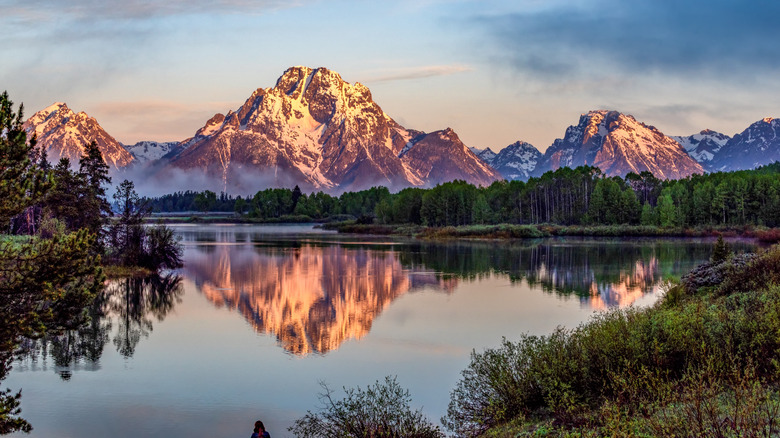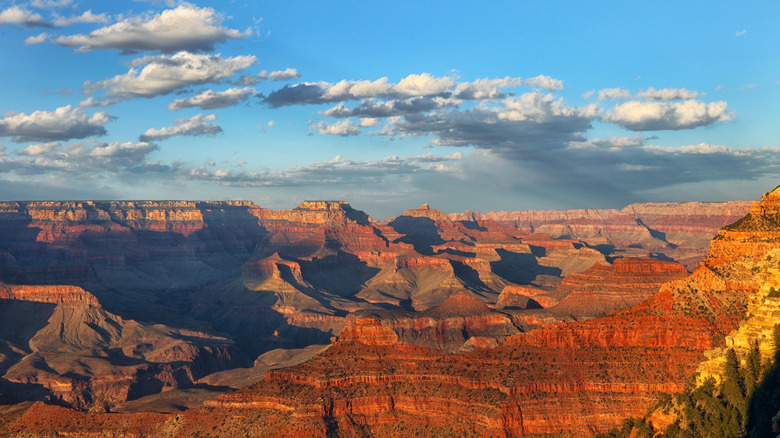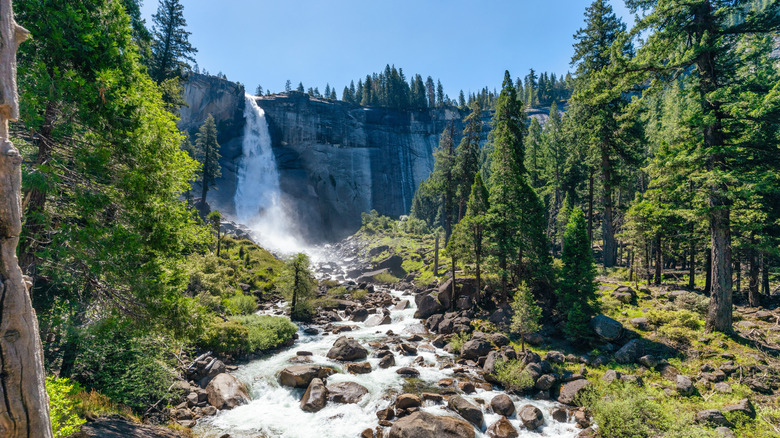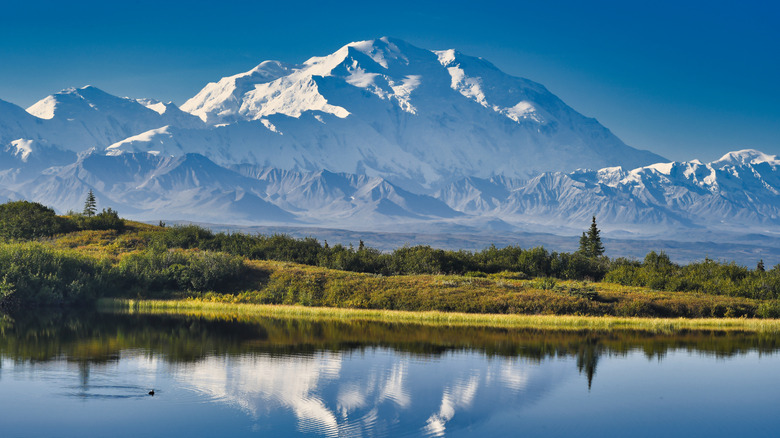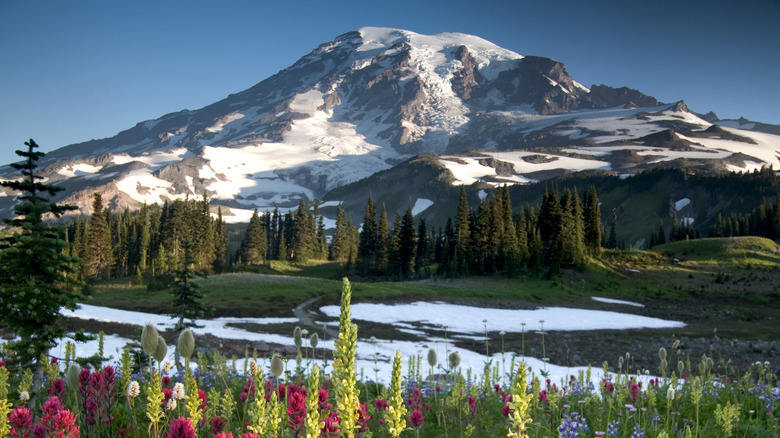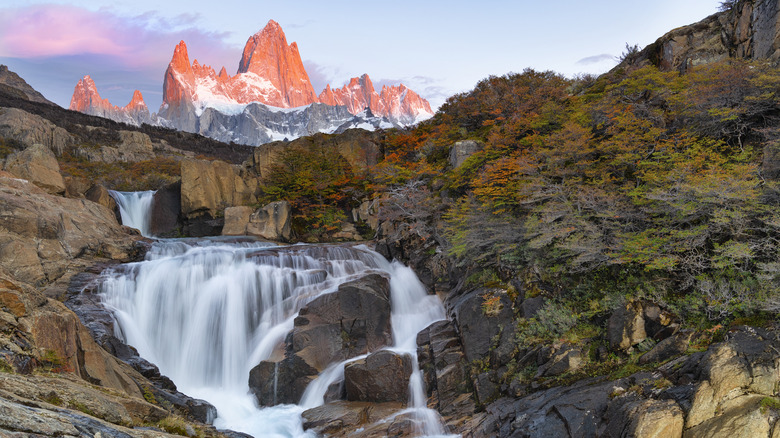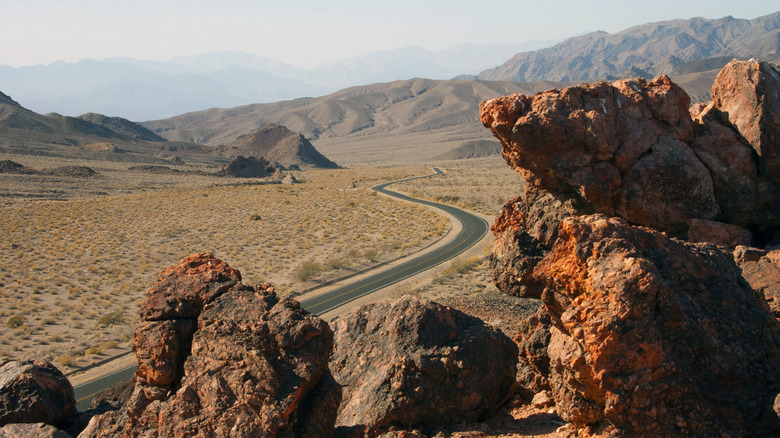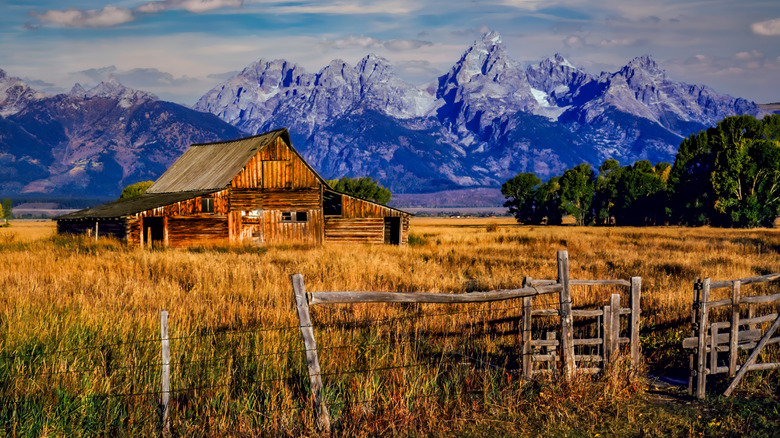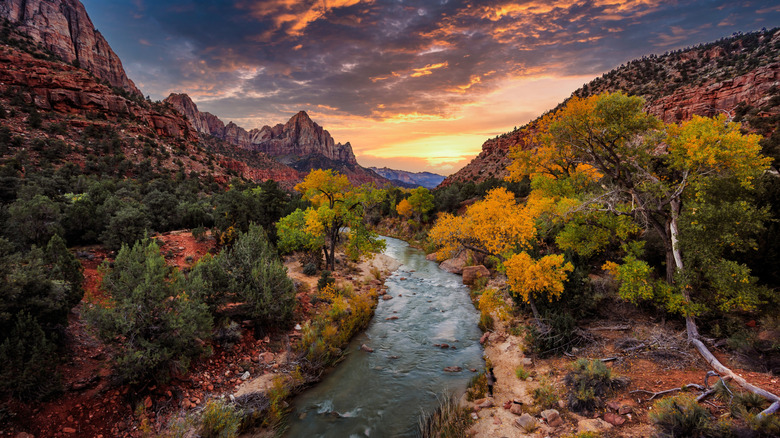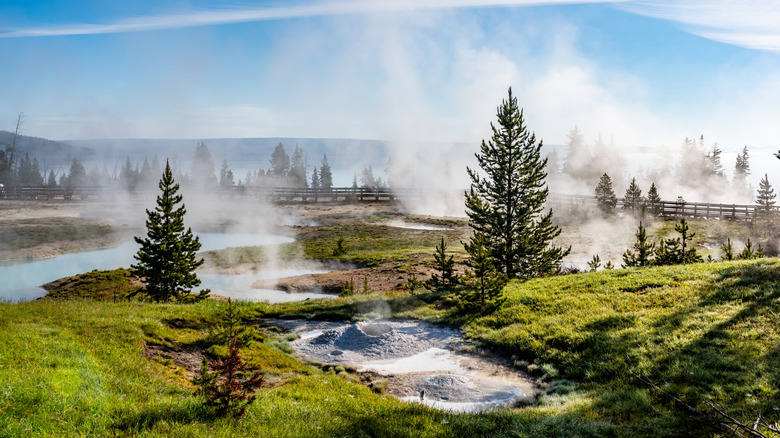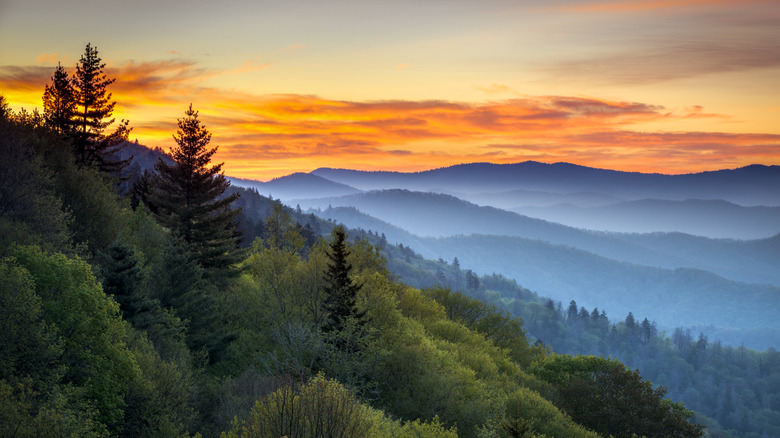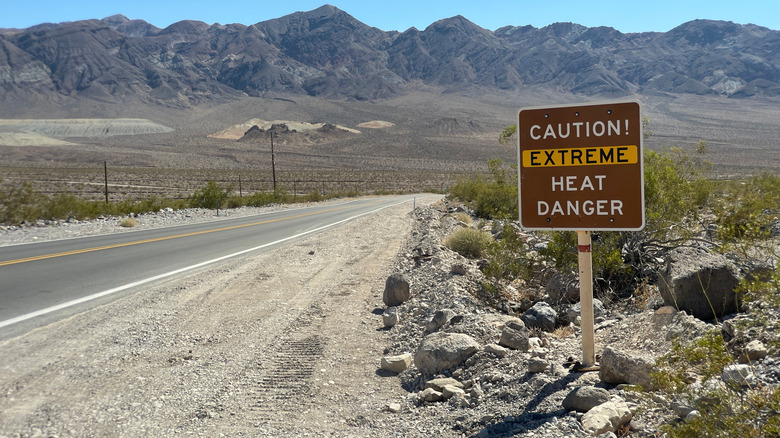The U.S. National Parks With The Highest Death Rates (And Why They Are So Dangerous)
If you're looking for dazzling scenery and energizing hikes, then America's network of national parks is a treasure chest just waiting to be discovered. These parks are home to some of the country's most iconic wonders, such as the Grand Canyon's breathtaking steep drops and geological features, Yosemite's soul-satisfying hikes, and Yellowstone's beautiful roadways and steaming geysers. No matter what kind of vacation you're planning for, there's a park for everyone.
However, you may want to pause before choosing which park to visit, as a selection of these sites can be dangerous for those visitors who aren't fully prepared for their rocky trails and tall cliffs. Between the years 2007 and 2024, a total of 4,213 people tragically lost their lives while visiting a national park.
The leading cause of death in these 17 years was drowning, with 826 fatalities occurring in the water. The second leading cause was motor vehicle crashes, with a total of 725 deaths occurring on the road. And while these numbers certainly might seem scary to those who had been dreaming of scenic swims and conquering summits via car, it's important to remember that accidents are preventable if you are aware of the dangers and take the necessary precautions. So, are you stuck on deciding which national park to visit? Let's break down which sites are the most dangerous, and how you can safety-proof your trip while still drinking in all the gorgeous views, landmarks, and nature encounters America's ecological oases have to offer.
Grand Canyon National Park
Grand Canyon National Park is one of the U.S.'s most iconic monuments, with its fascinating, multicoloured layered rock faces and immense size. In fact, the canyon spans over 277 miles wide and is a mile deep. With these numbers, it should come as no surprise to learn that the Grand Canyon has been recognized as one of the Seven Natural Wonders of the World. It's a crowd pleaser, that's for sure, as Grand Canyon National Park attracts up to 5 million visitors annually.
However, despite its natural beauty, the massive number of visitors the park receives each year also results in a large number of injuries and deaths every year. The National Park Service reports that 198 people lost their lives in Grand Canyon National Park in the period from 2007 to 2024, making it the most deadly national park in the United States. These incidents include falls from cliffs that can reach heights of 8,803 feet, medical emergencies, heatstroke, and drownings in the lake.
While this might sound alarming, the actual odds of you losing your life in the park are low. The clothing company KÜHL reports that the odds of dying here are about "1 in 664,099." To stay safe, keep in mind that temperatures on the canyon floor can reach over 100 degrees Fahrenheit in the summer, so always bring water and wear cool clothing. Remain on marked trails, follow all safety protocols, and your trip to the Grand Canyon should be nothing short of magical.
Yosemite National Park
Yosemite National Park is renowned for its natural granite cliffs, enormous sequoia trees that can reach whopping heights of up to 285 feet, and cascading waterfalls that catch the glittering sunlight. This California park also has a great historical significance, adding to the allure of the site, being one of the first national parks to be established in 1890. There are more than just breathtaking views available here. Yosemite offers many recreational activities, including a collection of challenging hiking and biking trails that wind throughout the park, and even rock climbing for the more daring visitors. However, if your adrenaline is already spiking at the sound of these physical challenges, it's also important that you read up on some of the most dangerous hikes in Yosemite and that you understand just how wrong things can go.
This national park, located in the Sierra Nevada mountain range, suffers an estimated 11 to 15 deaths annually and has seen approximately 1,300 deaths since it was first established. Most on-site deaths occur when unsuspecting travelers fall from the popular viewpoints like Taft Point and Nevada Fall. Many of these deaths happen because people do not follow the park's rules. For example, in 2011, a 26-year-old woman fell to her death after climbing the Half Dome in wet weather conditions. In that same year, a tourist group fell after ignoring signs prohibiting them from climbing a safety railing. If you remain weather-aware and follow safety precautions, your trip should fly by smoothly.
Denali National Park
This underrated, mountainous national park is home to the highest peak in North America as well as hundreds of diverse wildlife species. Nature enthusiasts will love Denali National Park for its 39 mammal species, including moose, bears, and gray wolves, and 169 varieties of bird species. Meanwhile, mountaineers and hikers will delight in taking on Mount McKinley, the famously tall peak, which towers over the park at a staggering 20,000 feet.
It's true that Denali National Park is not Alaska's largest national park, but what it lacks in size it makes up for in raw, natural beauty. Glacial rivers mirror images of dense forests, while, at night, you might even get a glimpse of the Northern Lights. Plus, the park still spans an impressive 6 million acres. However, traversing these wild lands does not come without risks. It is uncertain just how many deaths the park suffers each year, but one report in the National Library of Medicine estimates that, between 1903 and 2006, there were 96 mountaineering deaths at Denali.
Craggy peaks make this park dangerous for inexperienced or unprepared climbers. Another variable travelers should be aware of is the extreme and often unpredictable weather conditions. Denali National Park often faces fierce, freezing cold storms that can come out of nowhere and leave you stranded. However, if you avoid visiting during the colder season from late October to March and only take on the peaks if you're certain in your skills, then all will be well.
Mount Rainier National Park
Mount Rainier National Park is renowned for its stunning, diverse landscapes and endless natural beauty. Visitors are often drawn to the park's endless choices of scenery. Thrillseekers will enjoy seeking out the fascinating active volcano on site, one of the most seismically active in the Cascade region, while winter lovers might flock to the park's crystal white glacial systems.
If you prefer something calmer, you could visit from mid-July to mid-August. In these summer months, the park's wildflower meadows are in full bloom, painted with bright, floral colors and buzzing with butterflies. With so many different adventures to choose from, it's not hard to see what makes Mount Rainier National Park one of America's favorites. However, it is also best to be aware of the natural dangers posed by these different terrains.
The average number of deaths at the Washington-located park is roughly 8.55 per 10 million visitors. Most of these deaths occur in winter, when the weather grows increasingly treacherous. With the lowest point of elevation at Mount Rainier still standing tall at 1,600 feet high, icy, slippery conditions can make mountain climbing fatal. Driving through the twisty bends can also prove dangerous, which is why many of the park's roads are closed in the icy season. If you are dreaming of seeing Mount Rainier dusted with snow, then just be sure to take extra precautions. Visitors are required to carry tire chains if visiting during this season, and checking road statuses is always encouraged.
Glacier National Park
The closest thing to a winter wonderland you'll find in the contiguous United States is Glacier National Park. With Grinnell Glacier standing tall at 7,000 feet high, the crisp Lake McDonald providing clear views of the snowcapped peaks, and snowshoe walks led by trained rangers, this national park is a dream destination for a Christmas holiday.
And if that's not enough to amaze you, then you have over 1 million acres of land to explore. In addition to the hiking trails, biking trails, lakes, and scenic roadways, there are also 25 active glaciers in the park (hence the name). As these are active, they are continually moving, gradually thawing and melting as the years go on.
While the idea of these wintery vistas might have you counting down the days to big coat season, there are also some dangers to be aware of if you are visiting in the cold season. Reports show that there are multiple incidents and deaths inside the park each year. According to The Daily Montanan, 1925 was the park's deadliest year, with four drownings, one tragic fall, and two deaths due to exposure taking place. The most common causes of death are falling, drowning, and natural causes like heart attacks and seizures. To avoid such a fate, follow protocols and know your physical limits. Winter can be a magical time at Glacier National Park if you keep in mind that icy mountainsides are exponentially more dangerous.
Death Valley National Park
Death Valley National Park is arid beauty taken to the extreme. It's a must-stop for radical travelers, as this intense national park is known for being the hottest and driest place in the United States, while Badwater Basin inside the park has broken the record for being the lowest point of elevation in all of North America, sitting at 282 feet below sea level.
If that wasn't enough to entice you, then grab your water jugs and sunscreen, because Death Valley National Park is world-famous for having some of the highest temperatures ever recorded on Earth. A jewel of the Southwest, a journey through this national park will earn you bragging rights, while also treating you to stunning views of twisting canyons, sand dunes, cracked salt flats, and rock formations in swirling hues of yellow, pink, and green.
However, as you might imagine, this Mars-like world is not the safest location. It's estimated that Death Valley National Park sees up to 5.87 deaths per 10 million visits. The danger of the park comes down to the unique environmental and atmospheric conditions that can create oven-like heat traps, which can be potentially fatal. To stay safe at Death Valley, stick to the mountaintops in the summer, bring plenty of water, and map out each water station in the park; top-ups are available at Furnace Creek, Stovepipe Wells, and Panamint Springs. Most importantly, listen to your body and understand that extreme adventure can be fun without being life-threatening.
Grand Teton National Park
Ragged mountains cut into the sky, moose roam the fields, and serene lakes house high populations of trout; it's a wilderman's dream come true, and it's called Grand Teton National Park. As well as being naturally beautiful, this national park also offers a wide range of outdoor activities that will draw you into the landscape. Jet skiing and boating are available on Jenny Lake and Jackson Lake. If you're not keen on water, then perhaps you would prefer a wildlife tour? These exclusive experiences give visitors a full view of all the park has to offer. Or maybe just a quiet walk through the woods will suit, as Grand Teton is home to 200 miles of hiking trails, all catering to different skill levels. No matter how adventurous you want to go, Grand Teton National Park has it all.
However, despite the many reasons to visit Grand Teton, it remains one of the more dangerous national parks in the country. Since it was founded in 1929, the slopey and spiky park has seen a total of 59 deaths. Most of these fatal accidents occur on the park's slopes, caused by accidental falls, as well as exposure to difficult terrains and climates, which make hiking conditions dangerous. Less frequently, deaths have resulted from encounters with wildlife, such as grizzly bears. Don't cross this one off your travel list, though. Stay 100 yards away from bears and remain on established trails, and a safe, exciting trip is entirely possible.
Zion National Park
Journey through amazing sandstone caverns, rock tunnels, and river trails at Zion National Park. The views alone are worth the trip, much less the life-affirming walks, hikes, and stargazing. Located in Utah, this relatively small national park spans just 146,597 acres and has biblical origins.
Legend has it that the Mormon travelers who settled in the area surrounding Zion National Park in the 1860s were so stunned by its pink-hued cliffs, staggering rock formations, and dramatic gorges that they decided to name it after the holy city of Jerusalem, which is called "Zion" in the Old Testament. Today, the park is a tourist hub, where millions flock every year to see its 800 native plant species, 290 bird species, and the red-rock Zion Canyon.
However, any visitor who is planning a trip to this arid wonder should be aware of the potential dangers. Being one of the most-visited national parks in the U.S., Zion naturally has a higher fatality rate than most. Between 2007 and 2024 alone, the park saw a total of 49 deaths. This averages to about 3.3 deaths per year. Falling is the most common cause of death. Pitfalls in the terrain, high mountain peaks, and unpredictable weather can sometimes be a recipe for disaster. The overall risk remains low, though, considering that Zion National Park traditionally sees about 4.62 million visitors every year. Avoid high-risk activities, and prepare for the eventuality of flash floods. With enough preparation, this park can be a dream destination.
Yellowstone National Park
Yellowstone National Park is not only one of the most iconic sites in America, but it is also one of the oldest and far-reaching national parks in the country, having been founded in 1872. Most notably, the site is home to over 10,000 hydrothermal features, such as the famous Old Faithful geyser, which can erupt with heights reaching up to 184 meters. Other unmissable spots include Lamar Valley, Canyon Village, and Yellowstone Lake, to name just a few.
And if that is not enough to please you, then you may prefer to sit back and observe the diverse range of wildlife that call Yellowstone home. Elk, black bears, wolves, bison, cougars, and wolverines are just a few of the majestic creatures that you might see roaming the forests and mountains of this 63-mile-long park. Other activities include river swimming, hiking, whitewater rafting, and more.
Sadly, just as Yellowstone National Park has been the site of countless joyful vacations, it has also been the site of multiple fatal accidents. Between 2007 and 2023, 74 deaths occurred within the park's boundaries. Medical episodes such as heart attacks and seizures are the top causes of death, with car accidents and drownings coming second and third. There is also a real geothermal risk from the hot springs and geysers, and visitors can suffer burns if they're not careful, so it's best to stay away. If you are mindful of your surroundings, then chances are you will be just fine.
Great Smoky Mountains National Park
The Great Smoky Mountains National Park gained popularity for its diverse natural landscapes, large, thriving forests, multiple waterfalls, and ancient summits that tower over the park. Horseback riding, fishing, hiking, and camping are all popular activities. For the history buffs out there, you'll also appreciate the centuries-old cemeteries that are dotted throughout the park.
Photographers, get excited, as this national park is also famed for its wildlife watching spots. You can see black bears, white-tailed deer, wild turkeys, elk, and a wide array of bird species, all thriving in their natural habitats. We wouldn't blame you if you wanted to stay forever. With everything from horse camps that are accessible by car to backcountry camps ideal for backpackers, camping is made easy at Great Smoky Mountains National Park.
Of course, if you are planning to stay long-term, then you should be aware of the dangers of the park. Knoxville News Sentinel reports that the personal injury law firm, Connecticut Trial Firm, conducted a report, placing the Great Smoky Mountains National Park as the fourth most dangerous national park in the country. Between 2013 and 2023, 104 people lost their lives within the park bounds. Car accidents were often cited as the cause, as was drowning. To stay safe, be careful around slippery water crossings, as rocks and pathways are often covered in algae. Use caution around bendy roads, follow the signs, and you will be on your way to an incident-free wilderness adventure.
Methodology
To uncover which U.S. national parks have the highest death rates (and what makes each one especially dangerous), we dove into public broadcasts and incident reports from around the country. Our primary sources included statistics from the National Park Service (NPS), which tracks visitor numbers, incidents, and fatalities across the over 400 park sites under its domain. This data allowed us to calculate death rates not just by total fatalities, but within a broader context. By comparing those numbers against visitation, we revealed a clearer picture of which parks are the riskiest.
We then examined cause-of-death reports, often published by local news outlets, which reveal the most common hazards within each park. Depending on the type of terrain found at the park, causes of death ranged from falls off cliffs, flash floods, and drowning accidents to wildlife encounters, vehicle crashes, and even extreme heat. Most importantly, though, we were sure to put these tragic events in context, helping us distinguish between tragic one-off accidents and recurring dangers tied to the landscape.
We also considered environmental factors that make certain parks more perilous. Parks with vast wilderness areas, unpredictable weather, or challenging terrain, for instance, consistently show higher fatality rates. Others, like those with strong rivers, remote trails, or extreme climates, amplify dangers for even the most experienced visitors. By blending these statistics with real-world context, we were able to warn visitors of the threats, while also providing a guide for how to safely enjoy each national park.
